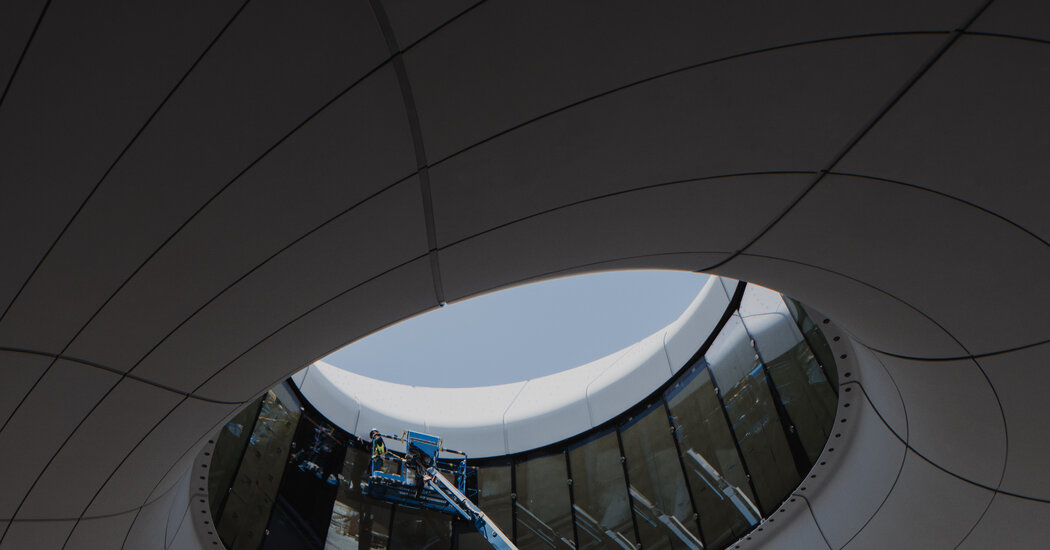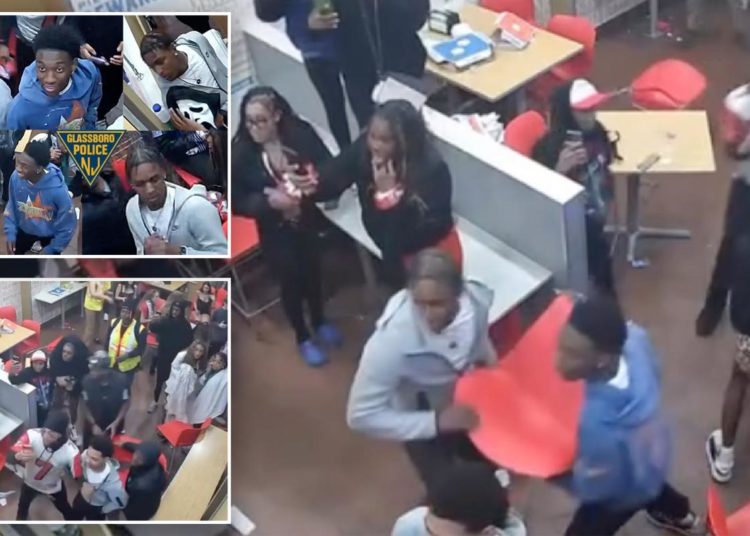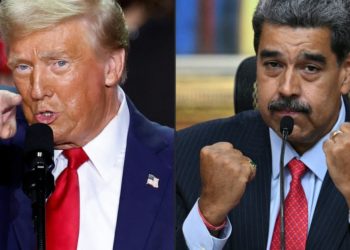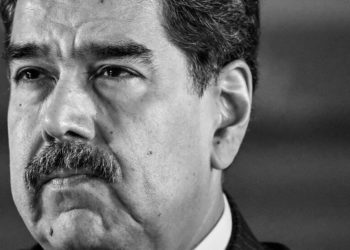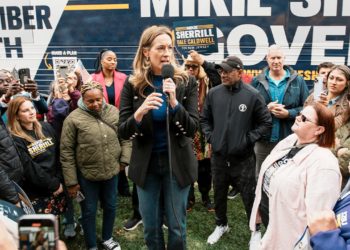After years of delays, the mammoth Lucas Museum of Narrative Art is finally approaching completion in Exposition Park in Los Angeles.
Despite its looming presence, though, the museum being built by George Lucas, creator of the “Star Wars” franchise, has long seemed to lack the sort of defining mission that would protect it from being dismissed as a vanity project.
What is a museum of narrative art? And why is Lucas building one?
Even now — 15 years since Lucas first proposed a museum, and eight years after ground was broken in Los Angeles — many questions remain about an ambitious but somewhat amorphous project that is now slated to be completed next year.
There has also been turbulence as the museum nears its final approach. In recent weeks the museum has parted ways with its director and chief executive of the past five years and eliminated 15 full-time positions and seven part-time employees, including much of the education department. Lucas is now back in the director’s chair, installing himself as the head of “content direction” and naming Jim Gianopulos, a former movie studio executive and Lucas Museum trustee, as interim chief executive.
Its former director, Sandra Jackson-Dumont, had been hired five years ago from the Metropolitan Museum of Art. Her outsider’s eye and knowledge of the museum world had been expected to broaden the raison d’être for the institution so that it would do more than serve as a monument to things that Lucas has collected or produced. But as of April 1, Jackson-Dumont departed in a move that was framed as a resignation.
The museum’s website describes its mission as exploring “how narrative art influences societies — shaping beliefs, communicating values, inspiring imagination, and creating communities.”
But some cultural leaders say that art that tells stories is ubiquitous, and can take just about any form, from hieroglyphics to comic strips to movies.
“They need to script a vision for this museum and how this moves forward,” said Richard Koshalek, the former longtime director of the Museum of Contemporary Art in Los Angeles. “And then they’re going to have to find the right leadership to do it.”
Jackson-Dumont’s exit has been the most prominent among several other senior leadership departures over the last year — only some of whom have been replaced — including the chief financial officer, the general counsel, the head of development, the director of exhibitions as well as the heads of information technology, security and education.
Among the employees cut this month were Regan Pro, the deputy director of public programs and social impact, and Bernardo Rondeau, the curator of film programs, who in 2023 left his position as senior director of film programs for the Academy Museum of Motion Pictures to take the job.
“We have evaluated our current organizational structure and determined that changes were needed,” the museum said through a spokeswoman. “It is a tremendously difficult decision to reorganize roles and to eliminate staff, but the restructure will allow the museum’s teams to work more efficiently to bring the museum to life for the public.”
This generalized explanation for the layoffs is in keeping with a close-to-the-vest approach that the institution has long taken with details about the project. Lucas and his wife, the business executive Mellody Hobson — who with Lucas serves as co-chair of the museum’s board — have consistently declined to discuss plans for the museum’s content in concrete detail. Staff members are required to sign nondisclosure agreements upon hiring, so those who agreed to be interviewed did so on condition of anonymity.
The museum recently said it could not give figures for the size of its staff or its projected operating budget. “As the museum is now in the process of moving from completion of construction to implementation of exhibitions and opening to visitors,” the museum spokeswoman said in an email, “both the staffing and operating budget are currently in transition and can better be addressed as we conclude our pending budgeting process.”
From the start, the spaceship-style building on an 11-acre landscaped campus, has been plagued by construction delays. The curvilinear structure itself — which was first proposed for San Francisco and then Chicago before landing in Exposition Park — has been complicated by the pandemic.
Problems have included supply-chain issues, design changes and conflicts between the architect (Ma Yansong of MAD Architects with Stantec as executive architect) and the general contractor (Hathaway Dinwiddie Construction Company). The opening date, first set at 2021, has been pushed back twice. (The museum’s spokeswoman would not reveal the current total expenditure, though it is widely believed to have exceeded $1 billion.)
What has not changed is the fact that the core of the institution’s collection would be items amassed by Lucas over the years. Beyond Hollywood memorabilia from his films and digital animation, his collection includes book and magazine illustrations assembled over 50 years, including those by R. Crumb and N.C. Wyeth; comic books; and Norman Rockwell’s paintings — such as the artist’s 1950 cover for the Saturday Evening Post, “Shuffleton’s Barbershop,” purchased from the Berkshire Museum in 2018.
Under Jackson-Dumont, the museum seemed to broaden its scope with acquisitions such as Robert Colescott’s 1975 painting, “George Washington Carver Crossing the Delaware River: Page from an American History Textbook,” a riff on Emanuel Leutze’s famous 1851 original, for $15.3 million at auction in 2021, a record price for that artist.
That same year, the Lucas acquired Judith Baca’s monumental mural “The History of California” (1976–84), popularly known as “The Great Wall of Los Angeles.”
Jackson-Dumont, who declined to comment, had been appointed in 2019, moving to Los Angeles for the position from the Met, where she served as chairwoman of the education department.
In the statement announcing her departure, Lucas and Hobson said Jackson-Dumont had decided to “move on” when the museum decided to split the director and chief executive role into two positions. The statement praised her “transformative leadership” had “helped lay the groundwork to establish the museum as a vital cultural resource for Los Angeles and a future destination for those who will visit from around the world.”
Lucas and Hobson, the co-chief executive of the asset management firm Ariel Investments, declined to comment.
Some of those involved in the institution’s development say they believed that Jackson-Dumont came up against Lucas’ role as the ultimate decision maker with a long history of creative control as well as his bottom-line, where-the-buck-stops primacy as founder and underwriter of the 300,000-square-foot museum. The filmmaker has had a hand in every detail of the museum’s development, former staffers say, from architectural details to exhibition layout to wall text.
Robert Storr, an art historian, critic and former dean at the Yale School of Art, said it is important for major collectors to understand the need for curatorial expertise and experience to shape exhibitions and give them scholarly context.
“If he thinks he’s the single arbiter, then he’s just like all these megalomaniacal patrons who think they know more than anyone they can hire,” Storr said. “They don’t have any methodology for how they talk about the evolution or digestion of ideas. It’s a serious intellectual problem that’s at the heart of all this.”
Conscious of his age (he turned 81 on May 14) — and the escalating construction bill — Lucas is eager to get the museum finished and open, those interviewed said, seeing it as his legacy and a long-awaited chance to share his collection with the public.
Lucas’s holdings will technically be on loan to the museum, and “the major majority of works from the founders’ private collections will be gifted to the Lucas Museum,” said Alex Capriotti, a spokeswoman, adding that several works have already been donated — including the entirety of the Lucasfilm Archives (1971–2012).
Whatever the bumps along the way, the museum is widely expected to draw large crowds when it finally opens, given its dramatic architecture, “Star Wars” worldwide fame and Lucas’s celebrity status.
Guests at Lucas’s splashy 80th birthday party last May at his Skywalker Ranch near San Francisco included Harrison Ford, Steven Spielberg, Oprah Winfrey, Robert De Niro, Steve Martin and Alicia Keys.
Paul Schimmel, who for 22 years served as chief curator of the Museum of Contemporary Art in Los Angeles, said that the city’s museums like the Norton Simon, Huntington and Getty wouldn’t exist without their founders and similarly bear their personal stamp.
“The uniqueness of each of these collections makes for something that’s remarkable,” he said. “If George Lucas needs to be the director to get this thing done, so be it.”
Robin Pogrebin, who has been a reporter for The Times for nearly 30 years, covers arts and culture.
The post As George Lucas’s ‘Starship’ Museum Nears Landing, He Takes the Controls appeared first on New York Times.
